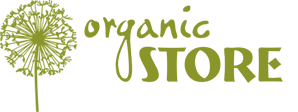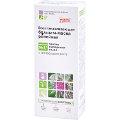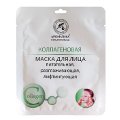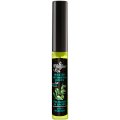 There is much debate today about the use of alcohols in skincare, their benefits and dangers. But it is hard to ignore the fact that without them, many products simply would not exist, because alcohols perform several important functions in cosmetic formulations. Let’s figure out together what types of alcohol can be found in skincare products and what roles they play.
There is much debate today about the use of alcohols in skincare, their benefits and dangers. But it is hard to ignore the fact that without them, many products simply would not exist, because alcohols perform several important functions in cosmetic formulations. Let’s figure out together what types of alcohol can be found in skincare products and what roles they play.
As you probably know from your school chemistry classes, alcohols are a large group of organic compounds that contain at least one hydroxyl functional group (−OH) which is bound to a saturated carbon atom. Various alcohols are widely found in nature as well as produced industrially; their functions and uses are very diverse.
For example, alcohols are widely used in the cosmetic industry. Of all existing types of alcohol, three are most often found in skincare products: saturated monatomic alcohols, aromatic alcohols, and fatty alcohols. Each of these types has its peculiar characteristics and functions.
Saturated Monatomic Alcohols
Saturated monatomic alcohols, also known as simple alcohols, are what people usually associate with the word “alcohol”. They include ethanol (ethyl alcohol), methanol (methyl alcohol), propanol and isopropanol (isopropyl alcohol), butanol (butyl alcohol), pentanol (amyl alcohol), and hexanol. The most commonly used simple alcohols in skincare products are ethanol, methanol, and isopropyl alcohol.
All of them have powerful antiseptic properties and often act as preservatives. They also serve as solvents, emulsifiers, stabilisers, buffer additives, fragrance fixatives, and enhancers.
It is simple alcohols that are considered most harmful to the skin because they are mild skin irritants. They prevent the skin from retaining moisture and damage its protective lipid layer, disrupting the skin’s barrier function. As a result, skincare products with a high content of simple alcohols may cause dry, flaky, and irritated skin.
Aromatic Alcohols
Aromatic alcohols are monatomic alcohols in which the hydroxyl group is linked to a carbon atom situated in a side-chain. This group of alcohols include, for example, benzyl alcohol (phenylmethanol), phenylethanol, phenylpropanol, vanillyl alcohol, cinnamyl alcohol, etc.
Benzyl alcohol is arguably the best known aromatic alcohol used in skincare products. It is naturally found in fruits, teas, and a variety of essential oils including jasmine, hyacinth and ylang-ylang. Benzyl alcohol is used primarily as a preservative in skincare products and as a fixative or stabiliser in perfumes.
For a preservative effect, the amount of benzyl alcohol added to a cosmetic product usually does not exceed 1–5%. This alcohol is very volatile and evaporates in the open air without absorbing into the skin. Therefore, benzyl alcohol is approved for use even in organic cosmetics, according to COSMOS standards.
Fatty Alcohols
Fatty alcohols have an oily or waxy texture. Unlike simple alcohols, they do not prevent the skin from retaining moisture. On the contrary, fatty alcohols have occlusive properties: they create an invisible barrier that helps to prevent transepidermal moisture loss. As a result, these alcohols are even considered good for the skin.
Fatty alcohols are used in skincare products as emulsifiers, thickeners, and softening agents. They include, for example, behenyl alcohol (docosanol), capryl alcohol, cetearyl alcohol, cetyl alcohol, myristyl alcohol, isostearyl alcohol, lauryl alcohol (dodecanol), decyl alcohol, oleyl alcohol (octadecenol), and of course the widely known glycerol (glycerine).
As you can see, there are many various alcohols used in skincare products, and not all of them are dangerous or harmful. Therefore, the amount of alcohol present in a particular cosmetic formulation and its purpose play a big role in its effect on the skin.
For example, products for oily and combination skin may contain up to 10% denatured alcohol as a solvent and preservative; this amount is considered safe for these skin types. On the other hand, products for dry and normal skin should contain no more than 5% denatured alcohol to be considered safe for use. The amount of aromatic alcohols, as we’ve already mentioned above, usually does not exceed 5%. As for fatty alcohols, their concentration may vary considerably depending on a particular skincare product.
It should also be noted that most simple, aromatic, and fatty alcohols usually have the word “alcohol” in their names on the ingredient list. However, some alcohols don’t have it. They include, for example, glycols (diols) and terpene alcohols.
Glycols are typically used in skincare products as solvents; they also act as preservatives, emulsifiers, stabilisers, softeners, emollients, and enhancers. They also create an invisible protective layer on the skin surface to prevent transepidermal moisture loss. Common glycols that can be found in cosmetic products include polyethylene glycol (PEG), propylene glycol, and pentylene glycol.
Terpenes and terpene alcohols are the primary components of essential oils responsible for their pleasant aroma. Terpene alcohols include, for example, borneol, menthol, linalool, geraniol, and citronellol. As skincare ingredients, they mainly serve as fragrances and natural preservatives.




